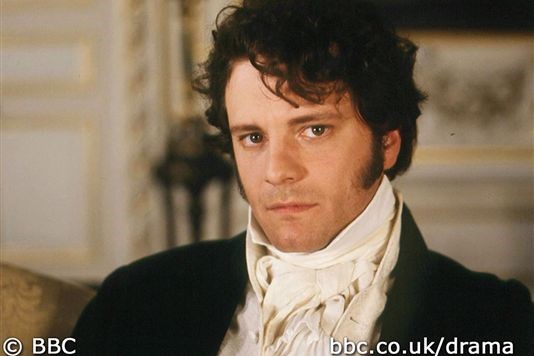
Charlotte Morgan's love of food is second only to her love for Pride and Prejudice. Seamlessly marrying these two passions together, she looks at how food features in the famous book, which is 200 years old this week.

Well, I’m afraid the joke’s on you Ralph… because since making those damning remarks, P&P has sold over 20 million copies worldwide and has been adapted for TV, radio and film in every way possible (I’ve counted 43 re-makes to date). You can even tour the locations where the 1995 BBC series was filmed, dressed in regency costume like I did (pictured here). Ahem.
Anywho, have you ever considered how important a part food plays in Pride and Prejudice? Here’s three things I’ve noticed, when reading the book and watching the classic BBC adaptation…
At the Netherfield Ball
Even ice cream was served at elegant Georgian balls to impress, and testicles were also delicacies; perhaps Darcy had a couple before plucking up the courage to dance? And to think, if Nicholls hadn’t made white soup enough, the ball would never have happened!
As for the booze, which the Bennet family make swift work of in the BBC adaptation, that would have been regency cups full of punch, white and red wine, 'negus' (wine mixed with hot water, lemon and nougat), 'orgeat' (a sweet orange and almond syrup), or 'ratafia' (coridal falvoured with fruit or almonds). Port was for the gentlemen only.
Mr Bennet’s fool
"The standby props man asked me what I liked to eat," he recalled. "I told him gooseberry fool was my favourite pudding and he kindly provided it for me. It was so delicious that during the first two takes of the scene I gorged myself. At the other end of the table Alison Steadman [Mrs Bennet] cannily toyed with a couple of grapes. It took two days to shoot this and I shall never be able to eat gooseberry fool again!" [Taken from the Jane Austen Centre]
The feeble Anne De Bourgh
Lady Catherine De Bourgh (Mr Darcy’s aunt, and Elizabeth Bennet’s nemesis) has a daughter, Anne De Bourgh, who has always been intended for Mr Darcy. She is introduced as looking “sickly and cross,” evidently because she eats so little. During a dinner at Lady Catherine’s grand estate, Miss De Bourgh’s companion Mrs Jenkinson was "chiefly employed in watching how little Miss De Bourgh ate, pressing her to try some dish, and fearing she was indisposed." The men, on the other hand, "did nothing but eat and admire".
It’s no coincidence that skinny Anne de Bourgh is portrayed as being sickly and unattractive, whereas plump Lydia Bennet is “naturally lively” and “never without partners” at a ball.
Are you a P&P fan? Or do you know anything about Georgian dining? Talk to us in the Comments box below…
Lead image courtesy of the BBC.
You might also like